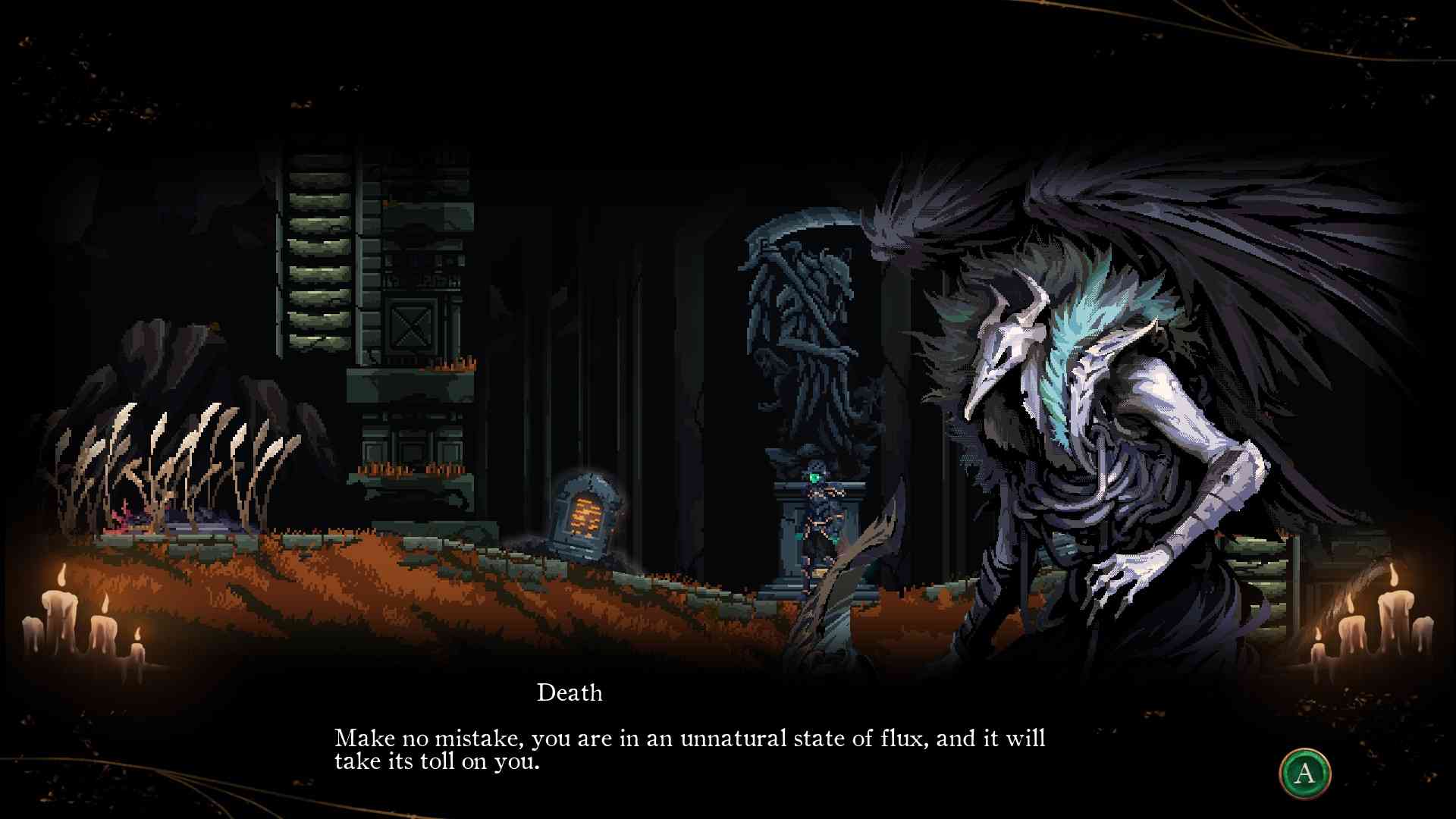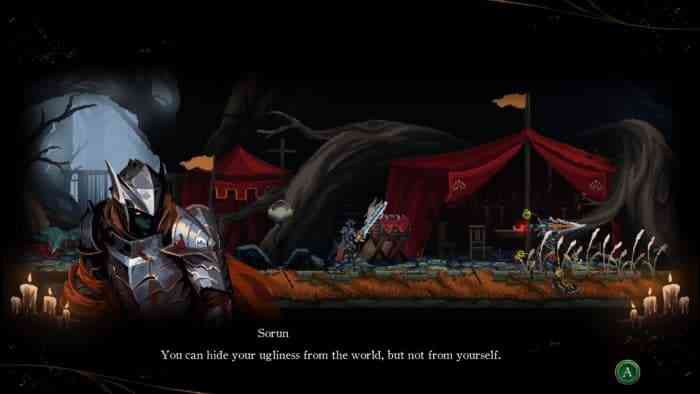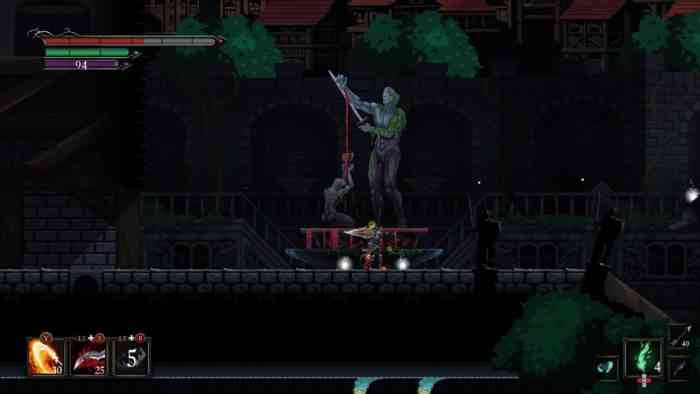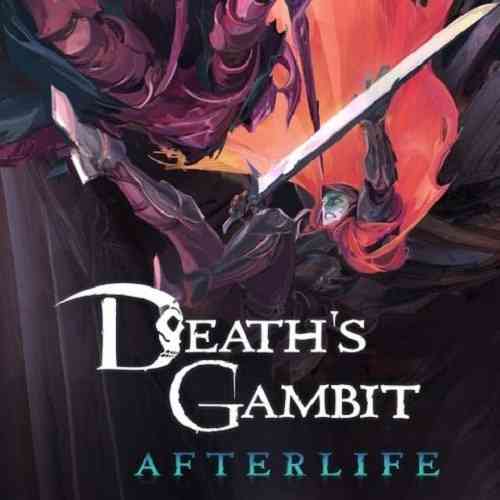Death’s Gambit: Afterlife Review
Sometimes, when a game doesn’t make quite as big a splash as it could have, the developers just shrug and move on with their lives. Other times, they take criticism as a challenge and come up with a DLC or expanded version specifically to address those issues. Death’s Gambit: Afterlife is publisher White Rabbit’s response to criticisms of the original release of Death’s Gambit, and through that lens, it’s quite the triumph. The developers use mechanical overhauls, an expanded world, and a wealth of towering foes to tell the tale of Siradon–a story of decay, corruption, and the terrible cost of immortality.
Part Psychological Horror, Part Dark Fairy Tale
Death’s Gambit: Afterlife takes heavy inspiration from Dark Souls and From Software’s other Soulsborne titles in terms of story as well as mechanics. It tells the tale of Sorun, a knight of Vados sent to claim the secret of immortality from Siradon. After the whole expedition was wiped out without even setting foot in the city of Aldwynn, Death himself makes a deal with Sorun: Sorun will revive endlessly, just as his immortal foes do, but in exchange, Sorun must agree to destroy the source of immortality outright. How will Sorun achieve his goal? A lot of trial and error, mostly, and you know what that means. Time to die, die again.

Story breadcrumbs are delivered through conversations with NPCs and foes as well as environmental design, item descriptions, and Journals of the Immortals dedicated to each boss. I really enjoyed how the Journals play out: as you explore an area, you find books filled with ominous lore about that location’s boss. The Journals provide information about the boss’s backstory and move set as well as providing some stat bonuses against it. The backstories are as tragic or horrifying as the lush but grotesque pixel art boss designs, and they help set the mood for a given area. On the other hand, the stat bonuses and descriptions of the move sets are very useful when planning your assault on a boss.
As I advanced deeper and deeper into the citadel, I found myself increasingly impressed with its melancholy mood. The pixel art graphics combine with some really beautiful spritework to build a mood that ranges from dream-like to nightmarish, especially once the true horrors permitted by this game’s take on immortality become clear. Just about everyone in this game may be immortal, but that only means there is no escape from what their world has become. Excellent voice acting sets the mood for a grim fantasy adventure, and a gorgeous orchestral soundtrack made the pain and struggle feel more than worth it. This isn’t the kind of dark fantasy you’ll find in grittier games like Dragon’s Age. Death’s Gambit: Afterlife presents its players with a more poetic brand of grimness. In some ways, it feels almost like a fairy tale, albeit a fairy tale twisted in on itself.

A Metroidvania With Soulslike Sensibilities
Death’s Gambit: Afterlife is every bit as hard and grueling as you’d expect a Soulslike to be, but the added Metroidvania elements serve to expand its reach and impact, especially now that the movement mechanics have been expanded and revamped. After the initial introductory level, Sorun can wander in pretty much any direction from the hub area of Sanctuary, encountering new threats and puzzles as he goes. Mastering the combat system will allow you to access new areas and unlock previously sealed doors. This may sound like simple Metroidvania, but trust me, the stakes are much higher when even basic enemies could kill you in about four hits if you let your guard down.

Pretty much every aspect of the game was overhauled according to player feedback and it really shows. The result is an expanded world full of lush detail and packed full of mini-bosses. Depending on your class and skill level, the game will range from slow-moving and strategic to a fast-paced hack and slash experience. I kept encountering new mechanics and tips well into my first run, which made it feel like the game was constantly changing and expanding to keep up with my progress. That said, I’m not a big fan of the fast travel mechanic being linked to a consumable item. It may fit the game’s oppressive and melancholy mood, but I’m the type who hoards consumables, which meant I did a lot of walking.
Death’s Gambit: Afterlife puts as much focus on exploration and finding new ways to traverse levels as it does on combat and difficult boss fights. There are also a number of environmental threats to deal with, ranging from basic spikes and poisonous plants to fire-breathing dragons and background towers that shoot lasers at you. I found myself having more trouble with these environmental threats than I did some boss fights: it took me two tries to get past The Bulwark of Aldwynn and about four to sprint across one very specific stretch of rooftop.

All in all, Death’s Gambit: Afterlife is a tough but rewarding exploration of a grim fantasy world populated by ruthless immortals, mindless constructs, and weary civilians whose lives have been horrifically twisted by forces beyond their control. The revamped movement options made traversing the expanded world a treat, though I would’ve liked a fast travel system that didn’t clash with my hoarding instincts. If you like Metroidvanias and Soulslikes and always wanted to know what it would be like if the two genres fused, then Death’s Gambit: Afterlife is for you.
***PC game code provided by the publisher***
The Good
- Gorgeous pixel art
- Difficult, high-stakes combat
- Greatly expanded maps
- Slick revamped mechanics
- A grim and enchanting world to explore
The Bad
- Very difficult
- Fast travel linked to consumables
- Exploring can be harder than boss fights

